Allied Telesis AT-X510-28GSX, AT-X510-28GTX, AT-X510-52GTX, AT-X510-52GPX, AT-X510-28GPX User Manual
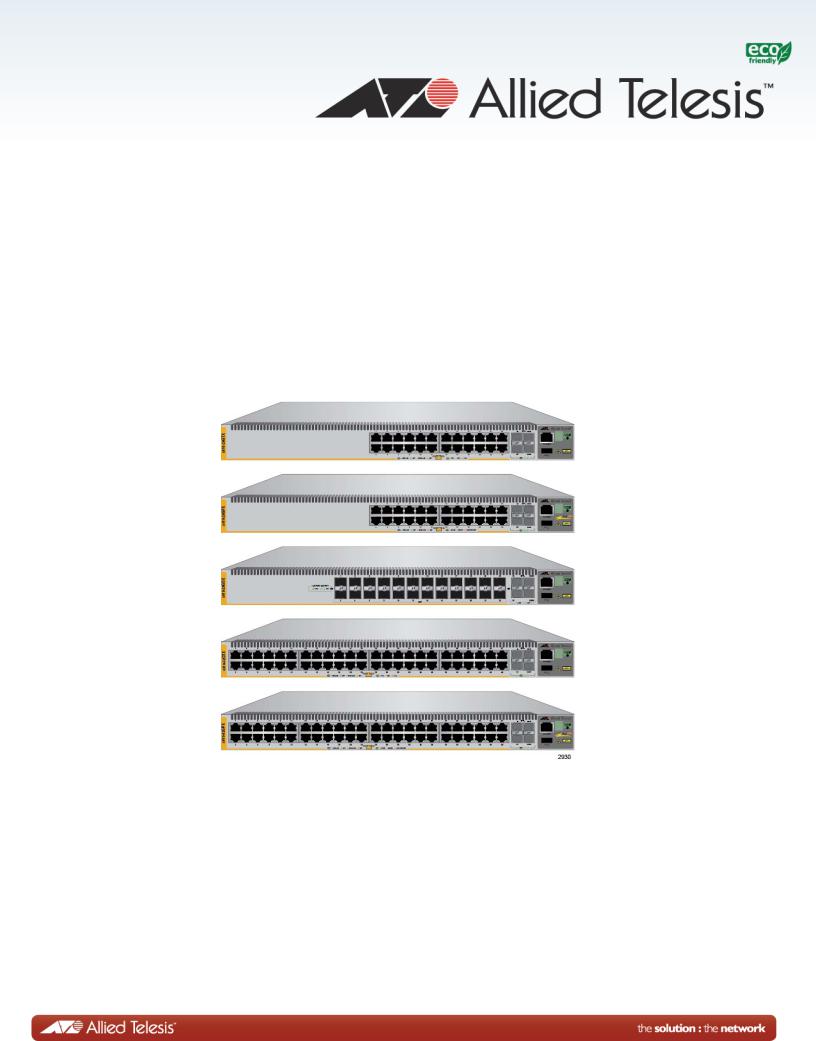
x510 Series
Gigabit Ethernet Switches
AT-x510-28GTX
AT-x510-28GPX
AT-x510-28GSX
AT-x510-52GTX
AT-x510-52GPX
Installation Guide for Stand-alone Switches
613-001764 Rev. B
Copyright 2013 Allied Telesis, Inc.
All rights reserved. No part of this publication may be reproduced without prior written permission from Allied Telesis, Inc.
Allied Telesis and the Allied Telesis logo are trademarks of Allied Telesis, Incorporated. All other product names, company names, logos or other designations mentioned herein are trademarks or registered trademarks of their respective owners.
Allied Telesis, Inc. reserves the right to make changes in specifications and other information contained in this document without prior written notice. The information provided herein is subject to change without notice. In no event shall Allied Telesis, Inc. be liable for any incidental, special, indirect, or consequential damages whatsoever, including but not limited to lost profits, arising out of or related to this manual or the information contained herein, even if Allied Telesis, Inc. has been advised of, known, or should have known, the possibility of such damages.
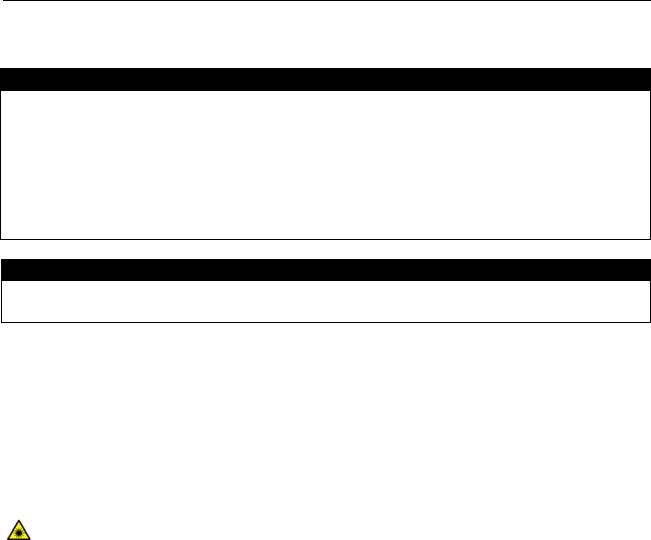
Electrical Safety and Emissions Standards
This product meets the following standards.
U.S. Federal Communications Commission
Radiated Energy
Note: This equipment has been tested and found to comply with the limits for a Class A digital device pursuant to Part 15 of FCC Rules. These limits are designed to provide reasonable protection against harmful interference when the equipment is operated in a commercial environment. This equipment generates, uses, and can radiate radio frequency energy and, if not installed and used in accordance with this instruction manual, may cause harmful interference to radio communications. Operation of this equipment in a residential area is likely to cause harmful interference in which case the user will be required to correct the interference at his own expense.
Note: Modifications or changes not expressly approved of by the manufacturer or the FCC, can void your right to operate this equipment.
Industry Canada
This Class A digital apparatus complies with Canadian ICES-003.
Cet appareil numérique de la classe A est conforme à la norme NMB-003 du Canada.
RFI Emissions: FCC Class A, EN55022 Class A, EN61000-3-2, EN61000-3-3, VCCI Class A, C-TICK, CE
Warning: In a domestic environment this product may cause radio interference in which case the user may be required to take adequate measures.
EMC (Immunity): EN55024
Electrical Safety: EN60950-1 (TUV), UL 60950-1 (CULUS)
Laser Safety |
EN60825 |
3

Translated Safety Statements
Important: Safety statements that have the symbol are translated into multiple languages in the
Translated Safety Statements document at www.alliedtelesis.com/support.
4

Contents
Preface .............................................................................................................................................................................. |
11 |
Document Conventions ....................................................................................................................................................... |
12 |
Contacting Allied Telesis ..................................................................................................................................................... |
13 |
Chapter 1: Overview ........................................................................................................................................................ |
15 |
Features .............................................................................................................................................................................. |
16 |
x510 Models ................................................................................................................................................................. |
16 |
10/100/1000 Mbps Twisted Pair Ports ......................................................................................................................... |
16 |
Power Over Ethernet.................................................................................................................................................... |
16 |
SFP Slots ..................................................................................................................................................................... |
16 |
SFP+ Slots ................................................................................................................................................................... |
17 |
Stacking Slots............................................................................................................................................................... |
17 |
LEDs............................................................................................................................................................................. |
18 |
Installation Options....................................................................................................................................................... |
18 |
MAC Address Table ..................................................................................................................................................... |
18 |
Management Software and Interfaces ......................................................................................................................... |
18 |
Management Methods.................................................................................................................................................. |
18 |
Front and Back Panels ........................................................................................................................................................ |
19 |
Management Panel ............................................................................................................................................................. |
22 |
10/100/1000Base-T Twisted Pair Ports............................................................................................................................... |
23 |
Speed ........................................................................................................................................................................... |
23 |
Duplex Mode ................................................................................................................................................................ |
23 |
Wiring Configuration..................................................................................................................................................... |
23 |
Maximum Distance....................................................................................................................................................... |
24 |
Cable Requirements..................................................................................................................................................... |
24 |
Port Pinouts.................................................................................................................................................................. |
24 |
Power Over Ethernet ........................................................................................................................................................... |
25 |
PoE Standards ............................................................................................................................................................. |
25 |
Powered Device Classes ............................................................................................................................................. |
25 |
Cable Requirements..................................................................................................................................................... |
26 |
Power Budget............................................................................................................................................................... |
27 |
Port Prioritization .......................................................................................................................................................... |
28 |
Wiring Implementation.................................................................................................................................................. |
29 |
SFP+ Slots........................................................................................................................................................................... |
30 |
Stacking SFP+ Slots............................................................................................................................................................ |
31 |
eco-friendly Button............................................................................................................................................................... |
32 |
LEDs.................................................................................................................................................................................... |
33 |
LEDs for the Twisted Pair Ports ................................................................................................................................... |
33 |
LEDs for the SFP Slots ................................................................................................................................................ |
36 |
LEDs for the SFP+ Slots .............................................................................................................................................. |
37 |
LEDs for the Stacking Slots.......................................................................................................................................... |
38 |
Switch ID LED .............................................................................................................................................................. |
38 |
USB Port.............................................................................................................................................................................. |
41 |
Console Port........................................................................................................................................................................ |
42 |
Power Supplies.................................................................................................................................................................... |
43 |
Chapter 2: Beginning the Installation ............................................................................................................................ |
45 |
Reviewing Safety Precautions............................................................................................................................................. |
46 |
Choosing a Site for the Switch ............................................................................................................................................ |
50 |
Unpacking the Switch .......................................................................................................................................................... |
51 |
5
Contents |
|
Chapter 3: Installing the Switch on a Table or in an Equipment Rack ....................................................................... |
53 |
Installing the Switch on a Table or Desktop........................................................................................................................ |
54 |
Installing the Switch in an Equipment Rack........................................................................................................................ |
55 |
Chapter 4: Cabling the Networking Ports ...................................................................................................................... |
59 |
Cabling the Twisted Pair Ports............................................................................................................................................ |
60 |
Installing SFP and SFP+ Transceivers ............................................................................................................................... |
62 |
Installing SFP Modules in the AT-x510-28GSX Switch ............................................................................................... |
63 |
Installing SFP and SFP+ Modules............................................................................................................................... |
66 |
Chapter 5: Powering On the Switch ............................................................................................................................... |
69 |
Powering On the Switch...................................................................................................................................................... |
70 |
Monitoring the Initialization Processes ........................................................................................................................ |
71 |
Configuring the Switch for Stand-alone Operations............................................................................................................ |
74 |
Starting a Local Management Session........................................................................................................................ |
74 |
Disabling VCStack....................................................................................................................................................... |
76 |
Confirming the Status of the VCStack Feature............................................................................................................ |
78 |
Specifying Ports in the Command Line Interface for Stand-alone Switches....................................................................... |
80 |
Chapter 6: Troubleshooting ............................................................................................................................................ |
81 |
Appendix A: Technical Specifications ........................................................................................................................... |
85 |
Physical Specifications ....................................................................................................................................................... |
85 |
Environmental Specifications.............................................................................................................................................. |
86 |
Power Specifications........................................................................................................................................................... |
86 |
Certifications ....................................................................................................................................................................... |
87 |
RJ-45 Twisted Pair Port Pinouts......................................................................................................................................... |
87 |
RJ-45 Style Serial Console Port Pinouts ............................................................................................................................ |
88 |
6

Figures
Figure 1: Front Panels of the AT-x510-28GTX and AT-x510-28GPX Switches ................................................................... |
19 |
Figure 2: Front Panels of the AT-x510-28GSX, AT-x510-52GTX, and AT-x510-52GPX Switches...................................... |
20 |
Figure 3: Back Panel of the AT-x510-28GTX, AT-x510-52GTX, and AT-x510-28GSX Switches ........................................ |
21 |
Figure 4: Back Panel of the AT-x510-28GPX and AT-x510-52GPX Switches ..................................................................... |
21 |
Figure 5: x510 Series Management Panel ........................................................................................................................... |
22 |
Figure 6: LEDs for the 10/100/1000Base-T Ports on the AT-x510-28GTX and AT-x510-52GTX Switches......................... |
33 |
Figure 7: LEDs for the 10/100/1000Base-T Ports on the AT-x510-28GPX and AT-x510-52GPX Switches ........................ |
35 |
Figure 8: SFP Slot LEDs on the AT-x510-28GSX Switch..................................................................................................... |
36 |
Figure 9: SFP+ Slot LEDs .................................................................................................................................................... |
37 |
Figure 10: Switch ID LED ..................................................................................................................................................... |
39 |
Figure 11: Switch ID LED ..................................................................................................................................................... |
39 |
Figure 12: Switch ID LEDs in the Low Power Mode............................................................................................................. |
40 |
Figure 13: Components of the x510 Series Switches........................................................................................................... |
51 |
Figure 14: Turning the Switch Upside Down ........................................................................................................................ |
55 |
Figure 15: Removing the Rubber Feet ................................................................................................................................. |
55 |
Figure 16: Attaching the Equipment Rack Brackets ............................................................................................................. |
56 |
Figure 17: Attaching the Equipment Rack Brackets (Continued) ......................................................................................... |
57 |
Figure 18: Mounting the Switch in an Equipment Rack........................................................................................................ |
57 |
Figure 19: Removing the Dust Plug from an SFP Slot ......................................................................................................... |
63 |
Figure 20: Installing an SFP Transceiver.............................................................................................................................. |
64 |
Figure 21: Removing the Dust Cover from an SFP Transceiver .......................................................................................... |
64 |
Figure 22: Positioning the SFP Handle in the Upright Position ............................................................................................ |
65 |
Figure 23: Connecting a Fiber Optic Cable to an SFP Transceiver...................................................................................... |
65 |
Figure 24: Removing the Dust Plug from an SFP+ Slot ....................................................................................................... |
66 |
Figure 25: Installing an SFP or SFP+ Transceiver ............................................................................................................... |
67 |
Figure 26: Removing the Dust Cover from an SFP or SFP+ Transceiver ............................................................................ |
67 |
Figure 27: Positioning the SFP or SFP+ Handle in the Upright Position .............................................................................. |
68 |
Figure 28: Connecting a Fiber Optic Cable to an SFP or SFP+ Transceiver ....................................................................... |
68 |
Figure 29: Plugging in the AC Power Cord........................................................................................................................... |
70 |
Figure 30: Switch Initialization Messages............................................................................................................................. |
71 |
Figure 31: Switch Initialization Messages (Continued)......................................................................................................... |
72 |
Figure 32: Switch Initialization Messages (Continued)......................................................................................................... |
73 |
Figure 33: Connecting the Management Cable to the Console Port .................................................................................... |
75 |
Figure 34: User Exec Mode Prompt ..................................................................................................................................... |
76 |
Figure 35: SHOW STACK Command................................................................................................................................... |
76 |
Figure 36: Moving to the Global Configuration Mode ........................................................................................................... |
77 |
Figure 37: Confirmation Prompt for the NO STACK ENABLE Command ............................................................................ |
77 |
Figure 38: Returning to the Privileged Exec Mode ............................................................................................................... |
77 |
Figure 39: Saving the Changes with the WRITE Command................................................................................................. |
78 |
Figure 40: Status of a Stacking Slot When VCStack is Disabled ......................................................................................... |
79 |
Figure 41: Status of a Stacking Slot When VCStack is Enabled .......................................................................................... |
79 |
Figure 42: PORT Parameter in the Command Line Interface............................................................................................... |
80 |
Figure 43: RJ-45 Socket Pin Layout (Front View) ................................................................................................................ |
87 |
7
Figures
8

Tables
Table 1: Twisted Pair Cable for the 10/100/1000Base-T Ports ........................................................................................... |
24 |
Table 2: IEEE Powered Device Classes .............................................................................................................................. |
26 |
Table 3: Twisted Pair Cable Requirements for the 10/100/1000Base-T Ports at 10 or 100Mbps ....................................... |
26 |
Table 4: Twisted Pair Cable Requirements for the 10/100/1000Base-T Ports at 1000Mbps .............................................. |
27 |
Table 5: Stacking Transceivers ........................................................................................................................................... |
31 |
Table 6: LEDs on the 10/100/1000Base-T Ports on the AT-x510-28GTX and AT-x510-52GTX Switches ......................... |
34 |
Table 7: LEDs on the 10/100/1000Base-T Ports on the AT-x510-28GPX and AT-x510-52GPX Switches ......................... |
35 |
Table 8: SFP Slot LEDs on the AT-x510-28GSX Switch ..................................................................................................... |
37 |
Table 9: SFP+ Slot LEDs ..................................................................................................................................................... |
38 |
Table 10: Stacking Slot LEDs .............................................................................................................................................. |
38 |
Table 11: Product Dimensions ............................................................................................................................................. |
85 |
Table 12: Product Weights .................................................................................................................................................. |
85 |
Table 13: Ventilation Requirements ..................................................................................................................................... |
85 |
Table 14: Environmental Specifications ............................................................................................................................... |
86 |
Table 15: Maximum Power Consumption ............................................................................................................................ |
86 |
Table 16: Input Voltages ...................................................................................................................................................... |
86 |
Table 17: Product Certifications ........................................................................................................................................... |
87 |
Table 18: Pin Signals for 10 and 100 Mbps ......................................................................................................................... |
87 |
Table 19: Pin Signals for 1000 Mbps ................................................................................................................................... |
88 |
Table 20: RJ-45 Style Serial Console Port Pin Signals ....................................................................................................... |
88 |
9
Tables
10

Preface
This guide contains the installation instructions for the x510 Series of Layer 2+ and Basic Layer 3, Gigabit Ethernet switches. This preface contains the following sections:
“Document Conventions” on page 12
“Contacting Allied Telesis” on page 13
Note
This guide explains how to install the switches as stand-alone units.
For instructions on how to install them in a stack configuration with
Virtual Chassis Stacking (VCStack™), refer to the x510 Series
Installation Guide for Virtual Chassis Stacking.
11
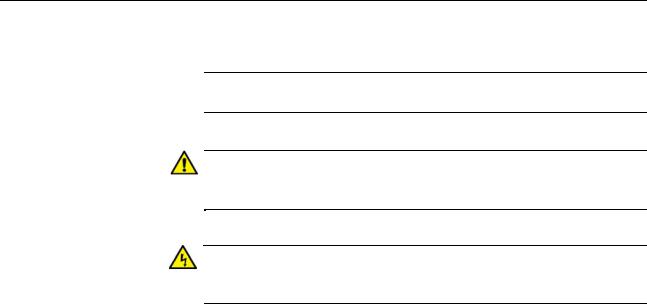
Preface
Document Conventions
This document uses the following conventions:
Note
Notes provide additional information.
Caution
Cautions inform you that performing or omitting a specific action may result in equipment damage or loss of data.
Warning
Warnings inform you that performing or omitting a specific action may result in bodily injury.
12

x510 Series Installation Guide for Stand-alone Switches
Contacting Allied Telesis
If you need assistance with this product, you may contact Allied Telesis technical support by going to the Support & Services section of the Allied Telesis web site at www.alliedtelesis.com/support. You can find links for the following services on this page:
24/7 Online Support — Enter our interactive support center to search for answers to your product questions in our knowledge database, to check support tickets, to learn about RMAs, and to contact Allied Telesis technical experts.
USA and EMEA phone support — Select the phone number that best fits your location and customer type.
Hardware warranty information — Learn about Allied Telesis warranties and register your product online.
Replacement Services — Submit a Return Merchandise Authorization (RMA) request via our interactive support center.
Documentation — View the most recent installation and user guides, software release notes, white papers, and data sheets for your products.
Software Downloads — Download the latest software releases for your managed products.
For sales or corporate information, go to www.alliedtelesis.com/ purchase and select your region.
13
Preface
14

Chapter 1
Overview
This chapter contains the following sections:
“Features” on page 16
“Front and Back Panels” on page 19
“Management Panel” on page 22
“10/100/1000Base-T Twisted Pair Ports” on page 23
“Power Over Ethernet” on page 25
“SFP+ Slots” on page 30
“Stacking SFP+ Slots” on page 31
“eco-friendly Button” on page 32
“LEDs” on page 33
“USB Port” on page 41
“Console Port” on page 42
“Power Supplies” on page 43
Note
This guide explains how to install the switches as stand-alone units.
For instructions on how to install them in a stack configuration with
Virtual Chassis Stacking (VCStack™), refer to the x510 Series
Installation Guide for Virtual Chassis Stacking.
15

Chapter 1: Overview
Features
Here are the switches and their features:
x510 Models
10/100/1000 Mbps Twisted Pair Ports
Here are the x510 Series switches:
AT-x510-28GTX
AT-x510-28GPX
AT-x510-28GPX
AT-x510-52GTX
AT-x510-52GPX
Here are the basic features of the 10/100/1000 Mbps twisted pair ports:
24 or 48 ports per switch
10Base-T, 100Base-TX, and 1000Base-T compliant
IEEE 802.3u Auto-Negotiation compliant
Auto-MDI/MDIX
100 meters (328 feet) maximum operating distance
IEEE 802.3x flow control in 10/100Base-TX full-duplex mode
IEEE 802.3x backpressure in 10/100Base-TX half-duplex mode
IEEE 802.3ab 1000Base-T
Jumbo frames up to 13KB
RJ-45 connectors
Power Over
Ethernet
SFP Slots
Here are the basic features of Power over Ethernet (PoE) on the twisted pair ports on the AT-x510-28GPX and AT-x510-52GPX Switches:
Supported on ports 1 to 24 on the AT-x510-28GPX Switch and ports 1 to 48 on the AT-x510-52GPX Switch
Supports PoE (15.4 watts maximum) and PoE+ (30 watts maximum) powered devices
Supports powered device classes 0 to 4
Maximum power budget of 370 watts
Port prioritization
Mode A wiring
Here are the basic features of the SFP slots on the AT-x510-28GSX Switch:
Supports 100Base-FX and 1000Base-SX/LX SFP transceivers
16

x510 Series Installation Guide for Stand-alone Switches
Supports single-port BiDi 1000Base-LX SFP transceivers
Supports 1000Base-ZX SFP transceivers
Supports 10/100/1000Base-T twisted pair transceivers
Note
SFP transceivers must be purchased separately. For a list of supported transceivers, contact your Allied Telesis distributor or reseller.
SFP+ Slots Here are the basic features of the four SFP+ slots on the switches:
Supports 10Gbps, 10GBase-SR/LR fiber optic transceivers
Supports 10Gbps AT-SP10TW direct connect twinax cables with SFP+ transceiver-style connectors
Supports 1000Base-SX/LX SFP transceivers
Supports single-port BiDi 1000Base-LX SFP transceivers
Supports 1000Base-ZX SFP transceivers
Note
The SFP+ slots do not support 100Mbps 100Base-FX transceivers.
Note
SFP and SFP+ transceivers must be purchased separately. For a list of supported transceivers, contact your Allied Telesis distributor or reseller.
Note
SFP+ slots 27 and 28 on the 28-port switches and slots 51 and 52 on the 52-port switches are initially configured as stacking slots for the VCStack feature. If you intend to use the switch as a stand-alone unit, you must disable the VCStack feature before you can use the slots with standard SFP or SFP+ transceivers. The configuration instructions are provided later in this guide, in “Configuring the Switch for Stand-alone Operations” on page 74.
Stacking Slots Two of the SFP+ slots can be used to create a VCStack of up to four switches. The slots support these stacking transceivers when the switch is in the stacking mode:
AT-StackXS/1.0 Twisted Pair Transceiver - 1 meter
AT-StackOP/0.3 Fiber Optic Transceiver - 300 meters
AT-StackOP/9.0 Fiber Optic Transceiver - 9 kilometers
17
Chapter 1: Overview
LEDs
Installation
Options
MAC Address
Table
Management
Software and
Interfaces
Management
Methods
Here are the port LEDs:
Link/activity and duplex mode LEDs for the twisted pair ports on non-PoE switches
Link/activity and PoE status LEDs for the twisted pair ports on PoE switches
Link/activity LEDs for SFP and SFP+ slots
Stack ID number LED
eco-friendly button turns off the LEDs to conserve electricity
Here are the installation options for the switches:
19-inch equipment rack
Desk or tabletop
Here are the basic features of the MAC address tables of the switches:
Storage capacity of 16,000 dynamic MAC address entries
Storage capacity of 256 static MAC address entries
Automatic learning and aging
Here are the management software and interfaces:
AlliedWare Plus Management Software
Command line interface
Web browser interface
Here are the methods for managing the switches:
Local management through the Console port
Remote Telnet and Secure Shell management
Remote HTTP and HTTPS web browser management
SNMPv1, v2c, and v3
18

x510 Series Installation Guide for Stand-alone Switches
Front and Back Panels
The front panels of the x510 Series switches are shown in Figure 1 and
Figure 2 on page 20.
AT-x510-28GTX
|
|
|
|
|
|
|
|
|
|
|
|
|
|
|
|
|
|
10/100/1000Base-T Ports |
|
|
|
Management |
||||
|
|
|
|
|
|
Panel |
||
|
|
|
|
|
|
|
|
|
|
|
|
|
|
|
|
|
|
|
|
SFP+ Slots |
|
|||||
|
|
|
|
|
|
|
||
|
|
|
|
|
SFP+ or |
|||
|
|
|
|
Stacking Slots |
||||
AT-x510-28GPX
|
|
|
|
|
|
|
|
|
|
|
|
|
|
|
|
|
|
10/100/1000Base-T Ports |
|
|
|
Management |
||||
with PoE |
|
|
|
|
Panel |
|||
|
|
|
|
|
|
|
|
|
|
|
|
|
|
|
|
|
|
|
|
SFP+ Slots |
|
|||||
|
|
|
|
|
|
|
||
|
|
|
|
|
SFP+ or |
|||
|
|
|
|
Stacking Slots |
||||
Figure 1. Front Panels of the AT-x510-28GTX and AT-x510-28GPX
Switches
19
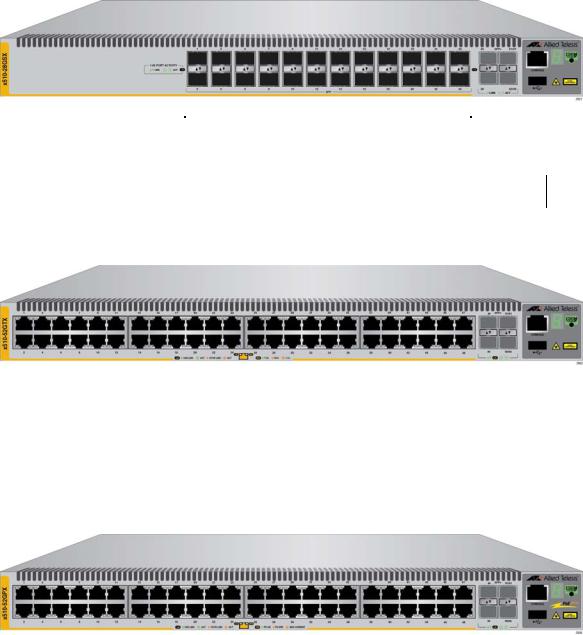
Chapter 1: Overview
AT-x510-28GSX
|
|
|
|
|
|
|
|
|
|
|
|
|
|
|
|
|
|
10/100/1000Base-T and 100/1000Base-FX |
|
Management |
||||||
Transceiver Slots |
|
|
Panel |
|||||
|
|
|
|
|
|
|
|
|
|
|
|
|
|
|
|
|
|
SFP+ Slots
SFP+ or
Stacking Slots
AT-x510-52GTX
|
|
|
|
|
|
|
|
|
|
|
|
|
|
|
|
|
|
10/100/1000Base-T Ports |
|
|
|
Management |
||||
|
|
|
|
|
|
Panel |
||
|
|
|
|
|
|
|
|
|
|
|
|
|
|
|
|
|
|
|
|
SFP+ Slots |
|
|||||
|
|
|
|
|
|
|
|
|
|
|
|
|
|
|
SFP+ or |
||
|
|
|
|
Stacking Slots |
||||
AT-x510-52GPX
|
|
|
|
|
|
|
|
|
|
|
|
|
|
|
|
|
|
10/100/1000Base-T Ports |
|
|
|
Management |
||||
with PoE |
|
|
|
|
Panel |
|||
|
|
|
|
|
|
|
|
|
|
|
|
|
|
|
|
|
|
|
|
SFP+ Slots |
|
|||||
|
|
|
|
|
|
|
||
|
|
|
|
|
SFP+ or |
|||
|
|
|
|
Stacking Slots |
||||
Figure 2. Front Panels of the AT-x510-28GSX, AT-x510-52GTX, and AT-
x510-52GPX Switches
20
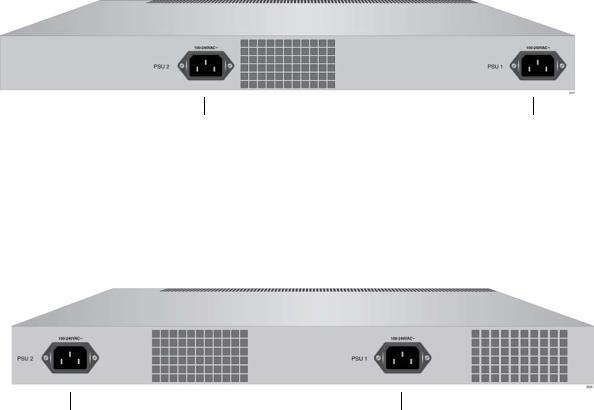
x510 Series Installation Guide for Stand-alone Switches
Figure 3 shows the back panel of the AT-x510-28GTX, AT-x510-52GTX, and AT-x510-28GSX Switches.
AC Power |
AC Power |
Connector |
Connector |
(Power Supply 2) |
(Power Supply 1) |
Figure 3. Back Panel of the AT-x510-28GTX, AT-x510-52GTX, and AT-
x510-28GSX Switches
Figure 4 shows the back panel of the AT-x510-28GPX and AT-x510- 52GPX Switches.
AC Power |
AC Power |
Connector |
Connector |
(Power Supply 2) |
(Power Supply 1) |
|
Figure 4. Back Panel of the AT-x510-28GPX and AT-x510-52GPX |
|
Switches |
21

Chapter 1: Overview
Management Panel
Figure 5 identifies the components in the management panels on the x510
Series switches.
Console
Management
Port
Switch
ID LED
eco-friendly |
Button |
USB Port
Figure 5. x510 Series Management Panel
22

x510 Series Installation Guide for Stand-alone Switches
10/100/1000Base-T Twisted Pair Ports
Speed
Duplex Mode
Wiring
Configuration
The switches have 24 or 48 10/100/1000Base-T ports.
The ports can operate at 10, 100, or 1000 Mbps. The speeds may be set manually using the management software or automatically with AutoNegotiation (IEEE 802.3u), the default setting.
Note
The ports must be set to Auto-Negotiation to function at 1000 Mbps and are not compatible with devices that are not IEEE 802.3u compliant.
The twisted pair ports can operate in either halfor full-duplex mode. The duplex mode of a port, like port speed, may be set manually using the management software or automatically with Auto-Negotiation (IEEE 802.3u), the default setting.
The speed and duplex mode settings of a port may be set independently of each other. For example, a port may be configured such that its speed is set manually while its duplex mode is established through AutoNegotiation.
Note
A switch port should not use Auto-Negotiation to set its duplex mode if it is connected to a network device that does not support AutoNegotiation for 10 or 100 Mbps operation and has a fixed duplex mode of full-duplex. Otherwise, a duplex-mode mismatch may occur in which a switch port and a network device operate at different duplex modes. The duplex modes of switch ports that are connected to network devices that do not support Auto-Negotiation should be set manually through the management software.
The wiring configuration of a port operating at 10 or 100 Mbps can be MDI or MDI-X. The wiring configurations of a switch port and a network device connected with straight-through twisted pair cabling have to be opposite, such that one device is using MDI and the other MDI-X. For instance, a switch port has to be set to MDI-X if it is connected to a network device set to MDI.
You may set the wiring configurations of the ports manually or let the switch configure them automatically with auto-MDI/MDI-X (IEEE 802.3abcompliant). This feature enables the switch to automatically negotiate with network devices to establish their proper settings.
23

Chapter 1: Overview
The MDI and MDI-X settings do not apply when ports are operating at 1000 Mbps.
Maximum The ports have a maximum operating distance of 100 meters (328 feet).
Distance
Cable
Requirements
Port Pinouts
The cable requirements of the ports are given in Table 1.
Table 1. Twisted Pair Cable for the 10/100/1000Base-T Ports
Cable Type |
10Mbps |
100Mbps |
1000Mbps |
|
|
|
|
|
|
|
|
Standard TIA/EIA 568-B- |
Yes |
Yes |
No |
compliant Category 3 shielded |
|
|
|
or unshielded cabling with 100 |
|
|
|
ohm impedance and a |
|
|
|
frequency of 16 MHz. |
|
|
|
|
|
|
|
Standard TIA/EIA 568-A- |
Yes |
Yes |
Yes |
compliant Category 5 or TIA/ |
|
|
|
EIA 568-B-compliant Enhanced |
|
|
|
Category 5 (Cat 5e) shielded or |
|
|
|
unshielded cabling with 100 |
|
|
|
ohm impedance and a |
|
|
|
frequency of 100 MHz. |
|
|
|
|
|
|
|
Standard TIA/EIA 568-B- |
Yes |
Yes |
Yes |
compliant Category 6 or 6a |
|
|
|
shielded cabling. |
|
|
|
|
|
|
|
Note
For the cable requirements for the ports on the AT-x510-28GPX and AT-x510-52GPX Switches for PoE devices, refer to Table 3 on page 26.
Refer to Table 18 on page 87 and Table 19 on page 88 for the port pinouts of the 10/100/1000Base-T twisted pair ports.
24

x510 Series Installation Guide for Stand-alone Switches
Power Over Ethernet
PoE Standards
Powered Device
Classes
The AT-x510-28GPX and AT-x510-52GPX Switches feature Power over Ethernet (PoE) on the 10/100/1000Base-T ports. PoE is used to supply power to network devices over the same twisted pair cables that carry the network traffic.
The main advantage of PoE is that it can make it easier to install a network. The selection of a location for a network device is often limited by whether there is a power source nearby. This often limits equipment placement or requires the added time and cost of having additional electrical sources installed. But with PoE, you can install PoE-compatible devices wherever they are needed without having to worry about whether there are power sources nearby.
A device that provides PoE to other network devices is referred to as power sourcing equipment (PSE). The AT-x510-28GPX and AT-x510- 52GPX Switches act as PSE units by adding DC power to the network cable, thus functioning as a central power source for other network devices.
Devices that receive their power from a PSE are called powered devices (PD). Examples include wireless access points, IP telephones, webcams, and even other Ethernet switches.
The switch automatically determines whether or not a device connected to a port is a powered device. Ports that are connected to network nodes that are not powered devices (that is, devices that receive their power from another power source) function as regular Ethernet ports, without PoE. The PoE feature remains activated on the ports but no power is delivered to the devices.
The AT-x510-28GPX and AT-x510-52GPX Switches support these PoE standards:
PoE (IEEE 802.3af): This standard provides up to 15.4 watts at the switch port to support powered devices that require up to 12.95 watts.
PoE+ (IEEE 802.3at): This standard provides up to 30.0 watts at the switch port to support powered devices that require up to 25.5 watts.
Powered devices are grouped into the five classes listed in Table 2 on page 26. The classes are based on the amount of power the devices require. The switches support all five classes.
25
Chapter 1: Overview
Cable
Requirements
Table 2. IEEE Powered Device Classes
|
Maximum Power |
|
Class |
Output from a Switch |
PD Power Range |
|
Port |
|
|
|
|
|
|
|
0 |
15.4W |
0.44W to 12.95W |
|
|
|
1 |
4.0W |
0.44W to 3.84W |
|
|
|
2 |
7.0W |
3.84W to 6.49W |
|
|
|
3 |
15.4W |
6.49W to 12.95W |
|
|
|
4 |
30.0W |
12.95W to 25.5W |
|
|
|
The cable requirements for ports operating at 10 or 100Mbps are given in Table 3.
Table 3. Twisted Pair Cable Requirements for the 10/100/1000Base-T Ports at 10 or 100Mbps
|
|
10Mbps |
|
|
100Mbps |
|
|
Cable Type |
|
|
|
|
|
|
|
Non- |
PoE |
PoE+ |
Non- |
PoE |
PoE+ |
||
|
|||||||
|
PoE |
PoE |
|||||
|
|
|
|
|
|||
|
|
|
|
|
|
|
|
|
|
|
|
|
|
|
|
Standard TIA/EIA 568-B- |
Yes |
Yes |
No |
Yes |
Yes |
No |
|
compliant Category 3 shielded |
|
|
|
|
|
|
|
or unshielded cabling with 100 |
|
|
|
|
|
|
|
ohm impedance and a |
|
|
|
|
|
|
|
frequency of 16 MHz. |
|
|
|
|
|
|
|
|
|
|
|
|
|
|
|
Standard TIA/EIA 568-A- |
Yes |
Yes |
No |
Yes |
Yes |
No |
|
compliant Category 5 shielded |
|
|
|
|
|
|
|
or unshielded cabling with 100 |
|
|
|
|
|
|
|
ohm impedance and a |
|
|
|
|
|
|
|
frequency of 100 MHz. |
|
|
|
|
|
|
|
|
|
|
|
|
|
|
|
Standard TIA/EIA 568-B- |
Yes |
Yes |
Yes |
Yes |
Yes |
Yes |
|
compliant Enhanced Category |
|
|
|
|
|
|
|
5 (Cat 5e) shielded or |
|
|
|
|
|
|
|
unshielded cabling with 100 |
|
|
|
|
|
|
|
ohm impedance and a |
|
|
|
|
|
|
|
frequency of 100 MHz. |
|
|
|
|
|
|
|
|
|
|
|
|
|
|
|
Standard TIA/EIA 568-B- |
Yes |
Yes |
Yes |
Yes |
Yes |
Yes |
|
compliant Category 6 or 6a |
|
|
|
|
|
|
|
shielded cabling. |
|
|
|
|
|
|
|
|
|
|
|
|
|
|
26
x510 Series Installation Guide for Stand-alone Switches
The cable requirements for ports operating at 1000Mbps are given in
Table 4.
Table 4. Twisted Pair Cable Requirements for the 10/100/1000Base-T
Ports at 1000Mbps
|
|
1000Mbps |
|
|
Cable Type |
|
|
|
|
Non- |
PoE |
|
PoE+ |
|
|
|
|||
|
PoE |
|
||
|
|
|
|
|
|
|
|
|
|
|
|
|
|
|
Standard TIA/EIA 568-B-compliant |
No |
No |
|
No |
Category 3 shielded or unshielded |
|
|
|
|
cabling with 100 ohm impedance and a |
|
|
|
|
frequency of 16 MHz. |
|
|
|
|
|
|
|
|
|
Standard TIA/EIA 568-A-compliant |
Yes |
Yes |
|
No |
Category 5 shielded or unshielded |
|
|
|
|
cabling with 100 ohm impedance and a |
|
|
|
|
frequency of 100 MHz. |
|
|
|
|
|
|
|
|
|
Standard TIA/EIA 568-B-compliant |
Yes |
Yes |
|
Yes |
Enhanced Category 5 (Cat 5e) shielded |
|
|
|
|
or unshielded cabling with 100 ohm |
|
|
|
|
impedance and a frequency of 100 MHz. |
|
|
|
|
|
|
|
|
|
Standard TIA/EIA 568-B-compliant |
Yes |
Yes |
|
Yes |
Category 6 or 6a shielded cabling. |
|
|
|
|
|
|
|
|
|
Power Budget The AT-x510-28GPX and AT-x510-52GPX Switches have a power budget of 370 watts. This is the maximum amount of power the switches can provide at one time to the powered devices.
The AT-x510-28GPX and AT-x510-52GPX Switches have two power supplies. Each power supply is responsible for providing 185 watts, or half, of the power budget. Both power supplies must be connected to AC power sources for the switch to provide the full 370 watts. The power budget is reduced to 185 watts if only one power supply is connected to a power source.
The power requirements of the PoE devices determine the maximum number of devices the switch can support at one time. So long as the total power requirements of the powered devices is less than the power budget of the switch, the switch can supply power to all the devices. But if the total power requirements exceed the power budget, the switch denies power to one or more ports using a mechanism referred to as port prioritization.
To determine whether the power requirements of the PoE devices you plan to connect to the switch exceed its power budget, refer to their documentation for their power requirements and add the requirements together. The switch should be able to power all of the devices
27
